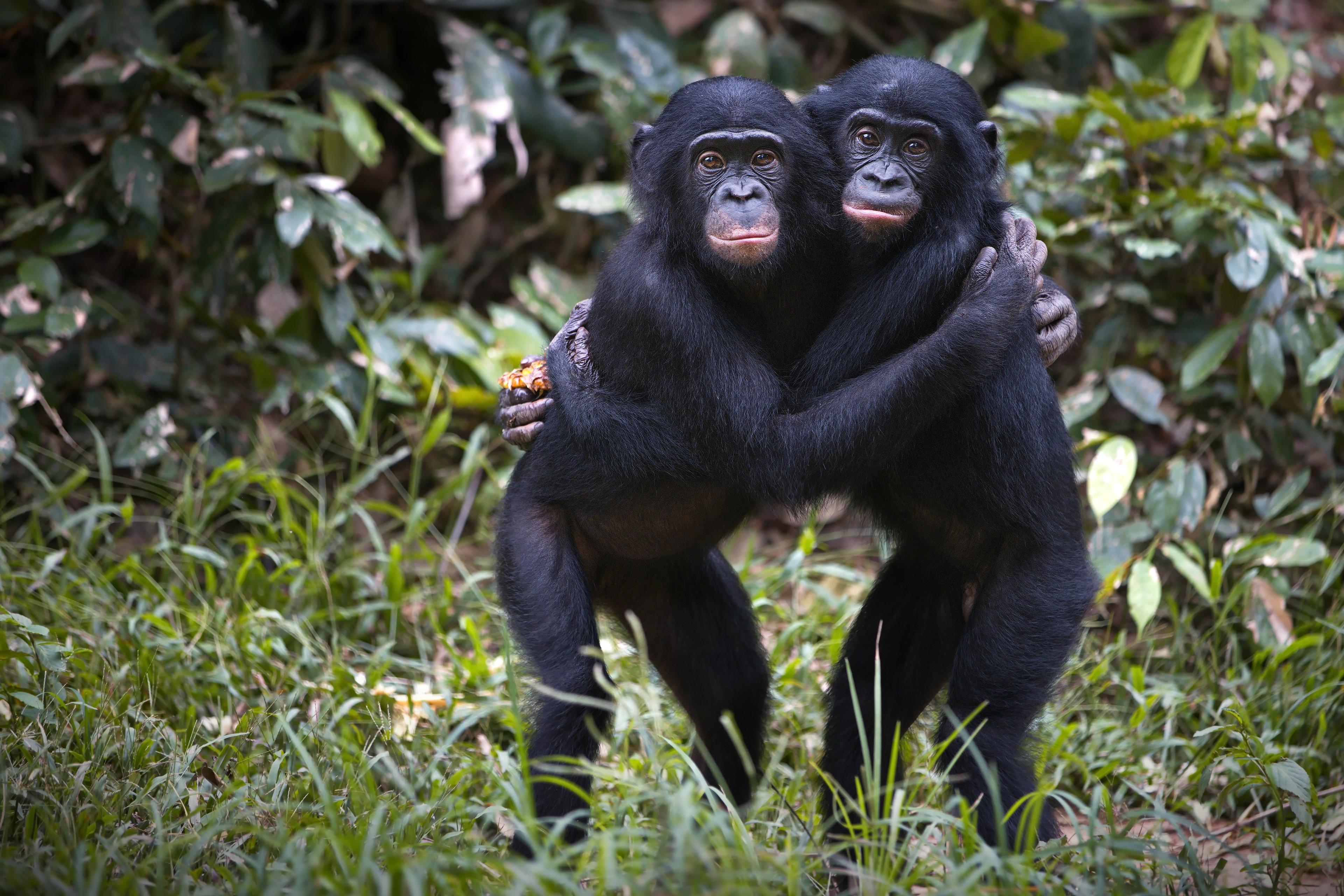The gay gene has loomed large in our social imagination since first coming out nearly three decades ago. In a 1993 issue of Science, the cancer researcher-turned-sexologist Dean Hamer employed cutting-edge genomic technologies in an attempt to reveal what it means to be queer. Though novel in its genetic claims, Hamer’s study joined a growing cohort of bio-driven theories including Simon LeVay’s work on neuroanatomical causes (ie, the ‘gay brain’ hypothesis) and similar searches for hormonal ones. Flush with funding from the Human Genome Project’s boosters, many others probed strands of DNA in the hopes of elucidating the nature of human identity and social life. Just as a range of traits from IQ to alcoholism were being pinned down to discrete genomic markers, so too was sexual orientation deemed a desire encoded deep within one’s biological makeup.
There are overtly political reasons for the production and popularisation of this brand of sexual science. Since the 1950s, when the first national gay and lesbian rights organisations formed across the United States, LGBTQ+ advocates have worked closely alongside sympathetic researchers to assist in conducting and promoting such work. In recent years, the American Civil Liberties Union and the National LGBTQ Task Force have even begun to marshal neuroanatomical research concerning the nature of gender identity – ie, a ‘trans brain’ hypothesis – in challenges to discriminatory bathroom policies.
This political investment in sexology has paid dividends for equal rights. Though the studies themselves have been at times vigorously contested, the ‘born this way’ sentiment has thrived. Public opinion research shows that Americans have adopted the explanation, often positing even stronger evidence of the innate than science has provided. Generally liberals prefer the biological thesis, which is likely due to how central the theme has been to campaigns for acceptance and civil rights.
Why is it, then, that LGBTQ+ advocates recently assisted in the production of new genomic research that found evidence that, at least at first blush, appears to undermine their claims about ontology? When a 2019 investigation of sexual orientation invited a slew of headlines declaring that ‘There Is No “Gay Gene”’, how did equal rights proponents reconcile their previous efforts with this reinterpretation of the human genome?
In August 2019, an international team of scientists – accompanied by researchers from the ancestry home-testing firm 23andMe – published the largest study to date on the biological determinants of sexual orientation. Drawing from a sample of nearly 500,000 individuals, culled from data from the UK Biobank and 23andMe, a group led by the geneticist Andrea Ganna put to the test an updated perspective on sexuality’s nature and origins.
By using a genome-wide association study (known in the field as a GWAS), the scientists weren’t looking for a direct gene-to-trait relationship. Instead of charting the kind of causal pathway that runs from a chromosomal location to a characteristic like height or hair colour, they examined how many different bits of genetic material might contribute to sexual behaviour. In the technical parlance, they observed how a multitude of single nucleotide polymorphisms (SNPs for short) give some direction to desire.
The abandonment of the singular gay gene thesis wasn’t nearly the most shocking feature of the study. After accounting for all of the SNPs that could be traced back to same-sex behaviour, Ganna and his team concluded that the genetic contribution was at most between 8 and 25 per cent. Even more notably, the researchers discerned the actual location of only five individual SNPs accounting for this variance – together, those SNPs could explain less than 1 per cent of the variation in sexual behaviour. Ergo, the findings provided essentially no predictive power to genetically assess any one individual’s orientation. While some scant biological element might be at play, what this deep dive into the human genome ironically revealed is that social and cultural factors likely play the greatest role in shaping human sexuality.
This is remarkable given that sexologists and gay rights advocates have long regarded such emphasis on social determinants as anathema. In the late 1960s and early ’70s, reformers in mental healthcare and gay rights activists worked jointly to rid psychology of those accounts that cast blame on effeminate fathers, overbearing and brutish mothers, and other allegedly adverse conditions. Just as soon as the virulently homophobic psychoanalytic old guard was ousted from the American Psychiatric Association in 1973 and replaced by liberal reformers, psychology began to bring the bio back in, where it has remained prominent. Ever since, the refrain of ‘cultural influence’, ‘choice’ and ‘lifestyle’ has been largely the domain of social conservatives housed in the Republican Party and at the fringes of mental healthcare.
At the risk of overstating its novelty, the Ganna GWAS retained some privileged position for genetic determinants and related hormonal explanations. And though activists and sexologists in decades past touted biological research as definitively disclosing the nature of sexual orientation, the studies themselves almost always retained some role for social and environmental factors. However, this study’s political and cultural reception marks a shift from bold pronouncements on the biological origins of sexual orientation to a more nuanced, more sociocultural, story.
The fact that LGBTQ+ movement leaders could bear to embrace these findings says much more about changes in the broader social world than it does about the malleability of queer advocates’ own attitudes. Since the early rights activists and their allies in mental health and sexology first sanitised gay identity with a neat, nonthreatening genetic origins story, the nuclear family and its sexual norms have transformed dramatically. The strict policing of sexuality and gender expression throughout most of the 20th century was an extension of the way that work, consumption and the family were organised. Due to reigning beliefs about the aberrant, potentially contagious nature of ‘deviant’ sexualities, the early homophile and lesbian political associations of the 1950s and ’60s often positioned themselves as a naturally occurring and benign minority group. If, as the sociobiologist Edward O Wilson mused, homosexuality was an adaptive trait that reserved a handful of effeminate men to watch over female gatherers, then there was no threat to the straight majority.
Gradually, over the course of the 20th century, the male breadwinner and the patriarchal family have been replaced by a less gendered division of work and greater freedom to choose how one associates, couples, or sleeps around. Notably, the economic necessity of having multiple wage earners in a family is an important part of that story. US corporations also now find it lucrative to hire queer employees and sell to a queer clientele. Of course, none of this could have been achieved without the struggle of activists, gay employee groups, nonprofit advocacy organisations and law firms. Nevertheless, the world has been steadily transforming beyond the apparent need for such rigid categories of gender expression and sexual experience.
At first, some queer activists and intellectuals saw lingering troubles in this new normal, characterised by the respectability culture of gay and lesbian life and its own strict tenets regarding marriage, monogamy and heteronormativity. However, that moment when the stark line between gay and straight was made benign, yet untraversable, lasted for only about the past three decades. Today, many people are eschewing standard social scripts and living fluid and abundantly diverse sexual and gendered lives; 20 per cent of millennials now identify as LGBTQ+ and more than a quarter of Californian schoolchildren between the ages of 12 and 17 are identified as gender-nonconforming. Even the conservative-dominated US Supreme Court found cause, in June 2020, to protect ostensibly any number of boundary-breaking sexual and gender behaviours by declaring all incidents of sex stereotyping by employers (eg, not promoting overtly masculine women or prohibiting men from wearing makeup) as a violation of federal civil rights law.
So, while the Ganna GWAS keeps the ‘born this way’ idea alive for those inspired by the promissory note that so often accompanies sociogenomic research – ‘if not today’s genetic research, then tomorrow’s will surely reveal the greater truth of human nature’ – it also reflects a reality in which equal rights advocates no longer fear that the loss of a strict ‘by nature’ narrative would be an existential one.
For all its merits, this postgenomic research wasn’t guided by a preternatural insight into the truer nature of our sexual selves. Like the leading scientific paradigms of previous epochs, postgenomic inquiries tend to rationalise – not merely reflect – the present status quo of society as the natural order of things. Other GWAS research, for instance, demonstrates how markers such as IQ, education and income are frequently rendered heritable in ways that treat their relationships to one another as natural, thereby rationalising today’s socioeconomic inequalities.
One such study mapped geographic clustering of genetic variants associated with traits like education. Its authors observed how those who fled dying coal towns also took their genetic predispositions for educational attainment out of the countryside’s genomic pool and into the cities. This study on education and migration lends support to those who would perceive the poor of the postindustrial British north and the affluent of the urbanised south as the product of natural sorting mechanisms, rather than the consequence of political decisions such as the assault on miners’ unions and the welfare state. Just like the Ganna GWAS, this research indexes changes in the social world and depicts their effects as more or less natural.
It is, of course, hard to deny that measures of intelligence and levels of formal education correlate with some heritable cognitive element, particularly one that might assist individuals in the steep climb up present-day social hierarchies. And although the researchers did indeed observe that a stronger social safety net would benefit the ravaged towns, their foundational commitment to a tight, naturalistic relationship between education and prosperity shifts the sources of inequality away from the very structural conditions that made educational talent and resources a precondition for a middle-class livelihood. Translated for an American audience, this narrative about uplift, education and ability could have easily been spun by the Appalachian exile J D Vance of Hillbilly Elegy fame.
Postgenomics today is thus playing out the rationalising functions that scientific inquiries into rather historically contingent identities and behavioural patterns always perform. Accordingly, the paradigm can generate some relatively valid postulates – it’s likely that our sexualities and genders are textured by a mix of social experience, the firings off of neurons, hormonal swirls and the transcription of DNA. But such science also allows defenders of the status quo – in all its libidinally liberated, economically devastated glory – to cast the world as it appears as the way that the world was meant to be. For all the high-powered machinery, impressive statistical methods and massive datasets that go into this knowledge production, we have inherited once again a collection of ‘just-so stories’ – that is, accounts of human nature depicted through a diverse confluence of causes rather than strictly genetic factors – now updated for our postgenomic age.








